Screens: what are they and what are they?
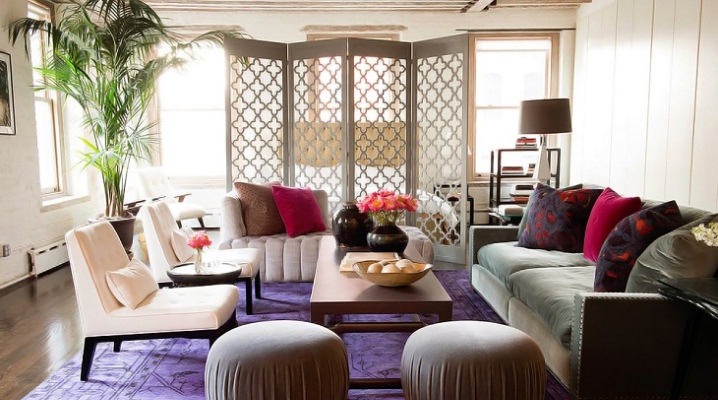
Rarely does an interior do without visual zoning of space. Screens are considered one of the best ways to separate it. Depending on their variety, they are able to bring organization into the space and endow it with a special aesthetics. The range of products is very wide, each type has its own characteristics that determine its relevance in a particular room of the dwelling.

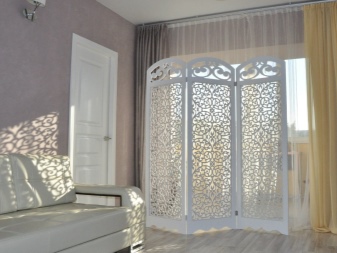
What it is?
A classic screen is an element of the interior or a portable partition that is used to divide the space. This is a mobile structure for a house or apartment, consisting of frames and finishing material... It is lightweight and functional. The number of sections is different, they are connected with loops.
Folding the structure resembles an accordion. Such products are used to divide space and decorate the interior. The frame of such products is made of lightweight materials (for example, wood or plastic).
For filling, paper, leather, fabric, and other materials are used.
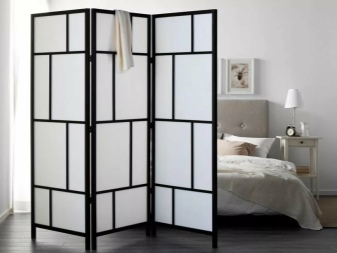
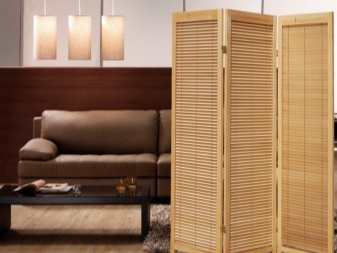
Advantages and disadvantages
Partition screens used in the interior have a lot of advantages. They are distinguished by:
- aesthetic appeal;
- variety of shapes and materials;
- wide range of colors;
- mobility and originality;
- compatibility with different interior styles;
- decorativeness and variety of design;
- compactness of storage space;
- availability for a wide range of buyers;
- varying degrees of functionality.
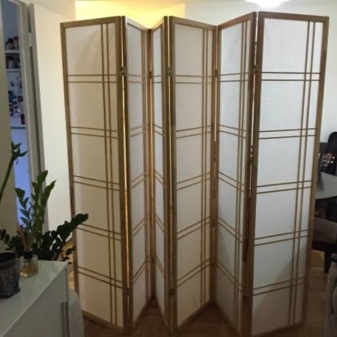
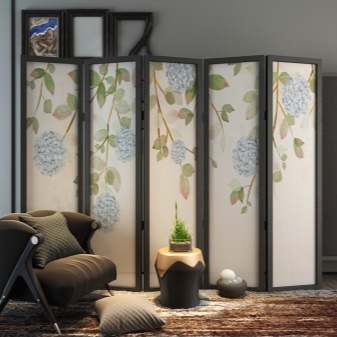
Depending on the variety, other modifications can be used as racks for storing small items. Individual models can be used in the interior as platforms to accentuate any functional area of the room. They are relevant for creating dressing areas, appropriate in bedrooms and one-room apartments and studio-layout dwellings. At the same time, the structures bring a sense of lightness to the interior.
Along with the advantages, screens have several disadvantages. For example, they are by no means universal and do not reduce noise levels. While they can be used in a variety of interior styles, they don't fit all of them. In addition, such interior elements cannot be used in small rooms.
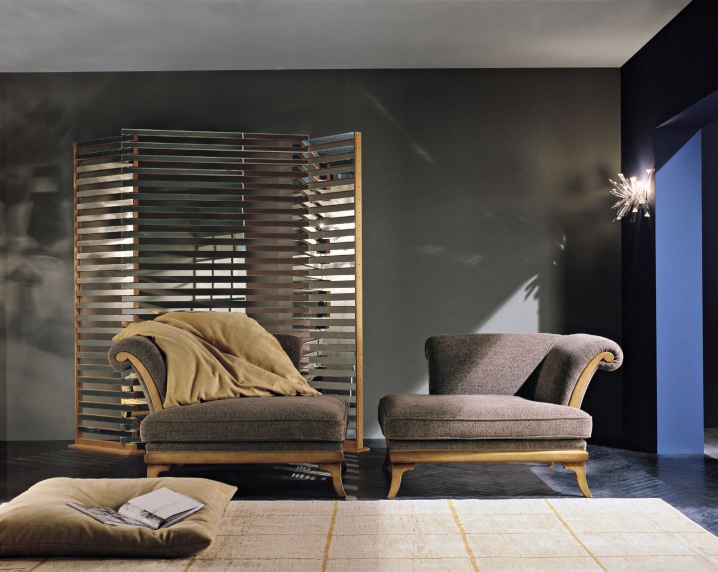
In such cases, they reduce the amount of light in the enclosed functional area. It is also bad that the stability of individual models depends on the opening angle. Other disadvantages include the complexity of caring for individual varieties and low wear resistance. Depending on the material used, the panels may break if dropped or be damaged by the claws of pets.

Species overview
Today, all existing models can be divided into several lines. Room screens are folding, single-screen, flexible, made in the form of panels. In addition, on sale you can see extraordinary options that differ in non-standard forms. Each species has its own characteristics.
Modifications differ in the type of installation. They can be free-standing or suspended. In addition, the models differ in functionality. The assortment of modern manufacturers includes items for dressing, screen-racks for clothes, decorative and functional interior partitions, options with a mirror.
According to the type of assembly, the models are foldable and rolled into a roll.
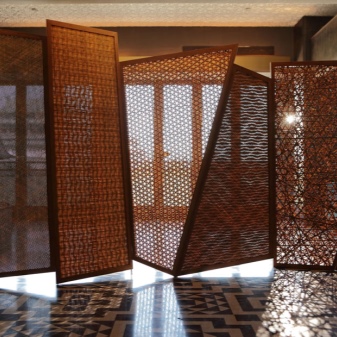
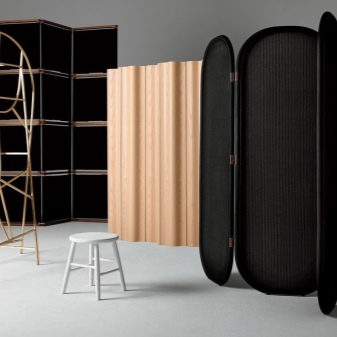
Single leaf
These models are based on a rigid framework. Products can be interior and medical. Their frame can be either lightweight or massive. As a rule, modifications have stable supports, in rare cases they are equipped with shelves or pockets, as well as roller mechanisms. Their key disadvantage is the impossibility of folding.
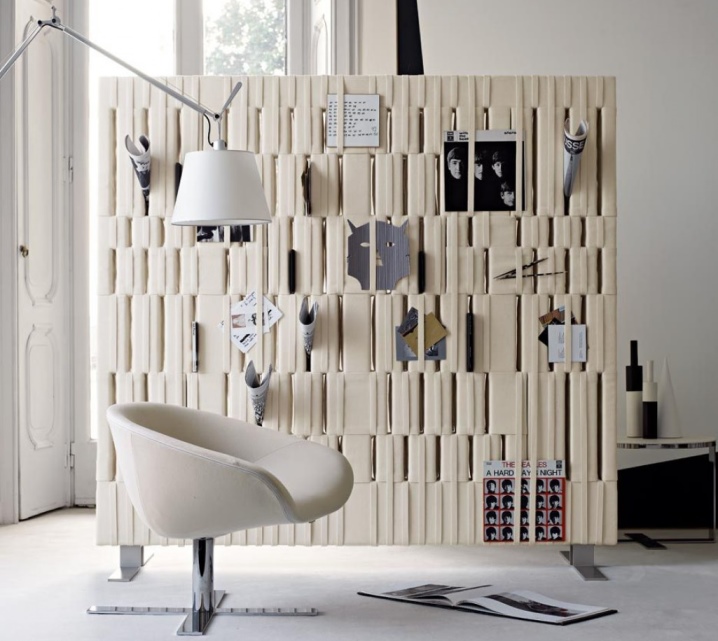
In addition to the classic varieties, manufacturers produce wall-mount options. Their installation provides for a shift to the side. The type of the working sheet of the screen door can be fabric, rigid and even unusual. Even stretched chains or carved elements can be located inside the frame. Screens-curtains also belong to these models.
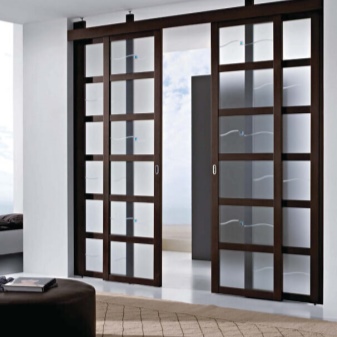
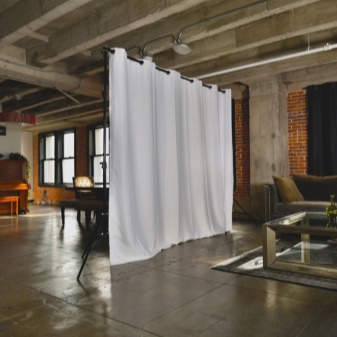
Multi-leaf
Models with several doors are more stable. These are accordion screens, the doors of which are connected to each other using furniture or piano hinges. The number of doors is limited by the size of the room, usually 3-5. These models are considered one of the most popular among buyers. They are often used as decorative interior filling.
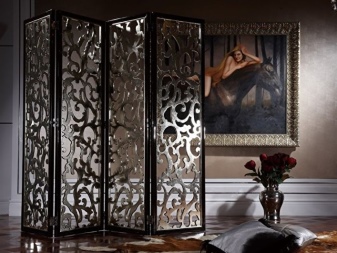
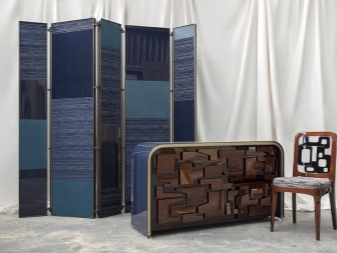
Products are variable in terms of design, they can have high support legs. The design of the sections is also different. Screens can be translucent, divided into 2-4 parts. The upper part of the frames is often decorated with decorative elements. Unlike single-screen analogs, the sash of multi-leaf modifications is noticeably narrower.
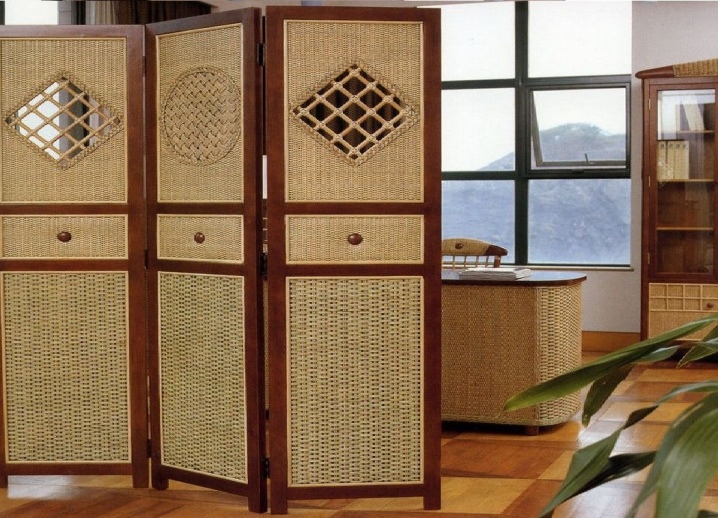
Flexible
Flexible screens consist of many narrow sections. The framework of modifications is created from thin tubes, slats or plates. They are connected into a single web by a flexible material. These screens are more mobile than other types. If necessary, they can be rolled up and transported.
In addition, the most bizarre shapes can be created from them. Such screens can be not only wavy. Thanks to a special production technology, they can be bent, forming peculiar shapes.
Portable screens are easy to assemble, can resemble horizontal blinds, as well as curved type partitions.
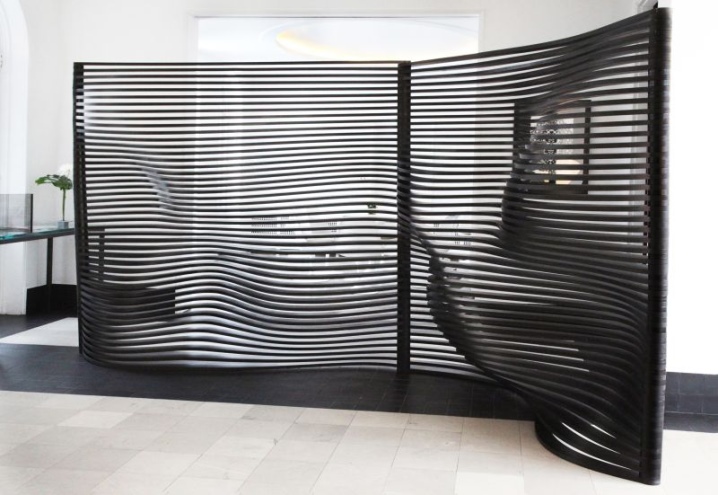
Screens-panels
Screens-cloths are nothing more than models with a predominantly woven base, attached to the ceiling. They perfectly zone the space, they differ from ordinary curtains in the absence of folds. Products are distinguished by a wealth of colors and designs. They can highlight accent points of the interior without creating visual clutter.
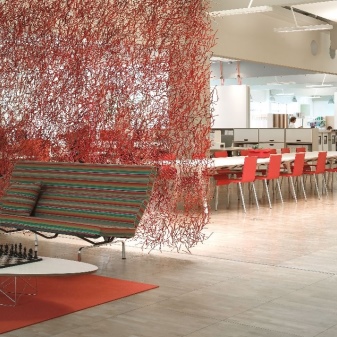
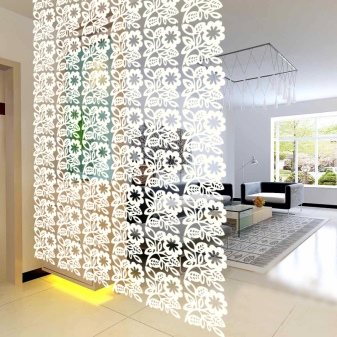
Certain varieties provide for the installation of light paintings. Thus, screens become not only a decorative, but also a functional design element. A small photo exhibition looks great on monochromatic models. Rare modifications include the installation of televisions.
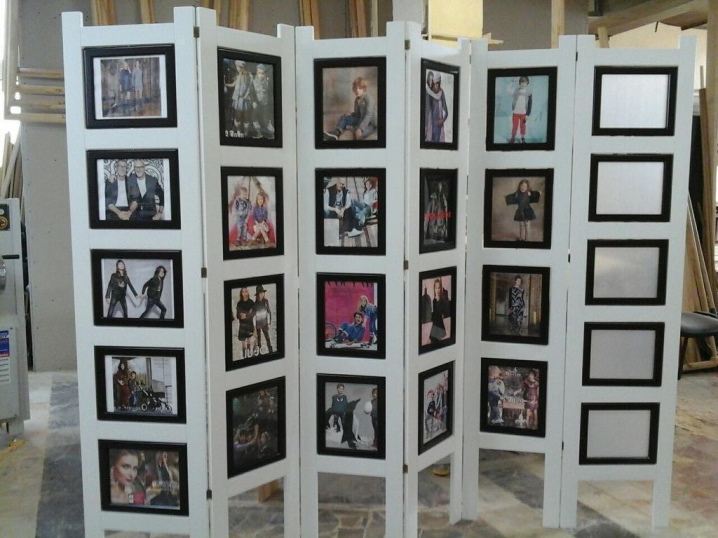
Multifunctional
In pursuit of customer attention, brands began to produce models with a wide range of functions. In addition to fencing and zoning, partition screens today can combine other functions. They can be used as a background for a specific functional area. For example, they can be installed in a guest space or recreation area.
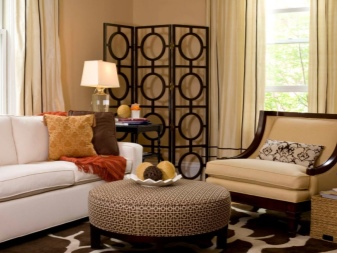

Other models act as mirrors. In addition to the fact that they zone the space, these partitions visually increase the area. Other varieties are installed in bathrooms to protect the wall decoration from splashing water. With their help, you can mask the imperfections of the room.

In order to increase functionality, manufacturers equip screens with crossbeams. Thanks to them, the frames can be used as small brackets for clothes. Some modifications have a removable type of canvas. This is convenient as it allows the fabric to be removed for washing.
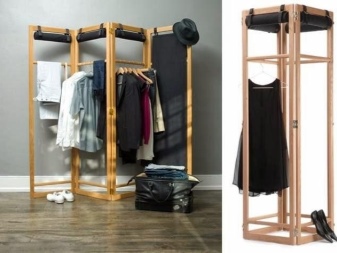

Versions with a removable woven fabric are often supplemented with functional pockets, in which you can store, for example, hygiene items, napkins, towels. Some products are used as functional hallways. They are equipped with shelves for watches, bags, hats.In addition, they have brackets for street clothes and places for fixing lamps.
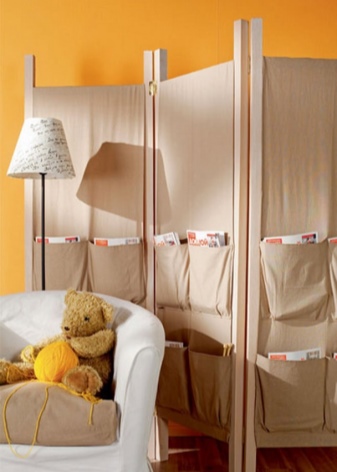
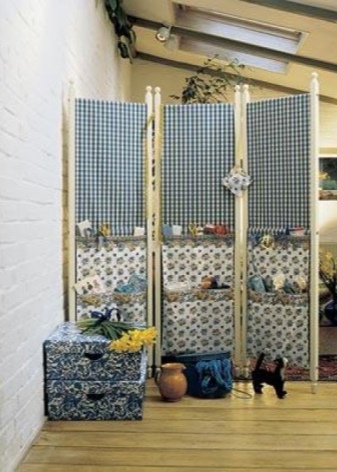
Materials (edit)
Different raw materials are used in the production of mobile partitions. Today screens are made of rattan, plywood, fabric, glass, bamboo, and plastic. The first model frames were originally wooden, but today, in addition to wood and plastic, metal is also used. The doors can be glass, fabric, plastic, wicker, bamboo.
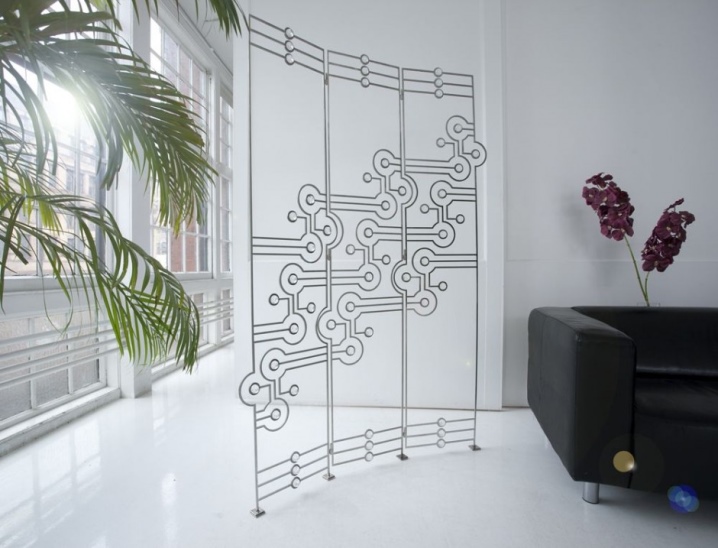
The choice of this or that material depends on the conditions of the room in which the partition is bought. Materials are often combined, for example, a screen can have a metal frame with a glass insert, a plastic base with textiles. Each raw material has its own characteristics.
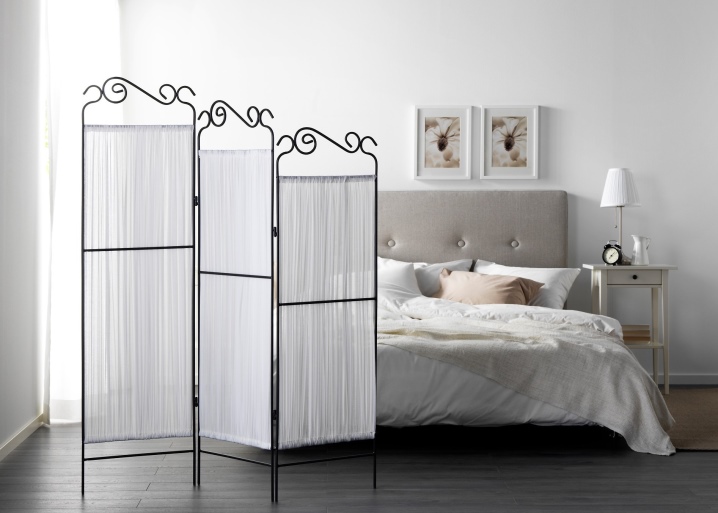
Wood it looks noble, is environmentally friendly and has the ability to create carved structures, but it deforms during operation.
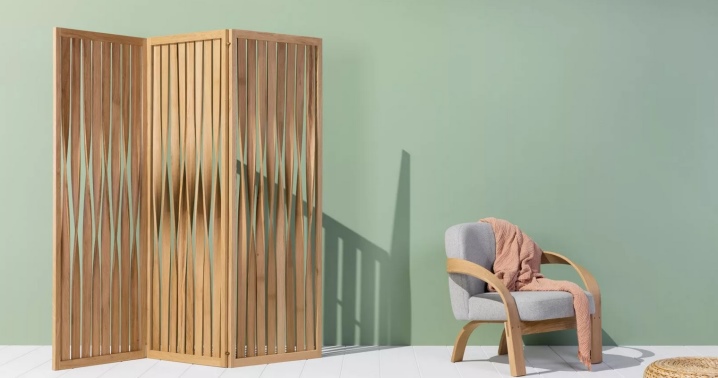
Metal can be both a base for any sash, and a full-fledged screen. Openwork partitions from it look visually easy and aesthetically attractive. The metal can be painted in gold, bronze, silver. The disadvantage of this material is the perceptible weight and the complexity of the transfer.
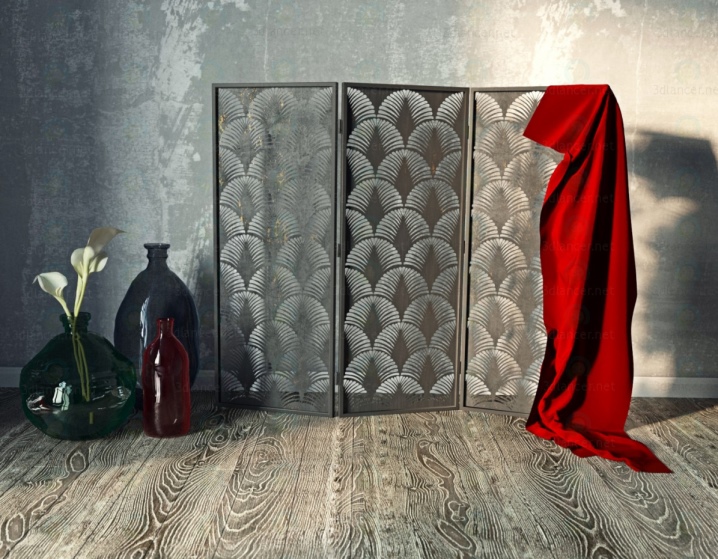
Glass and mirror add a sense of visual lightness to the interior. They are combined with any materials available in the arrangement. Therefore, they are great for decorating any room in the home. The glass surface of the sash can be transparent, translucent, glossy, matte, painted, with or without a pattern. In addition, the glass can be stained glass.
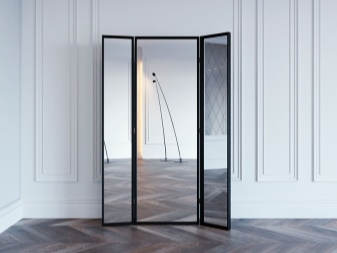
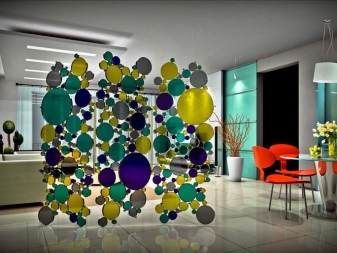
Textile and leather models add a special touch to the interior. With their help, you can emphasize the status of the interior composition, indicate belonging to a certain style. Skin care is simple, to maintain its aesthetic appeal, it is enough to wipe it with a damp cloth.
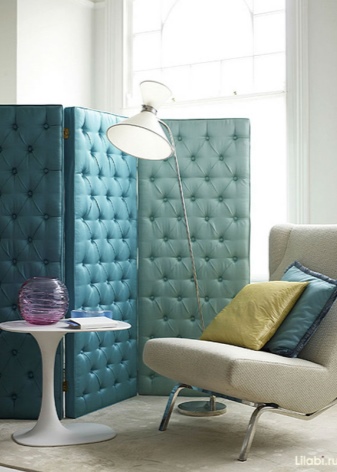
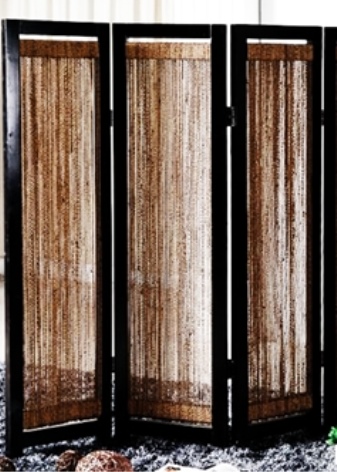
An unusual material option is rice paper. It is used for the shutters of Japanese and Chinese screens. Such partitions look very impressive. In addition, to embody the oriental style, they use the stylization of the material for paper or silk. The frames of such products are wooden.
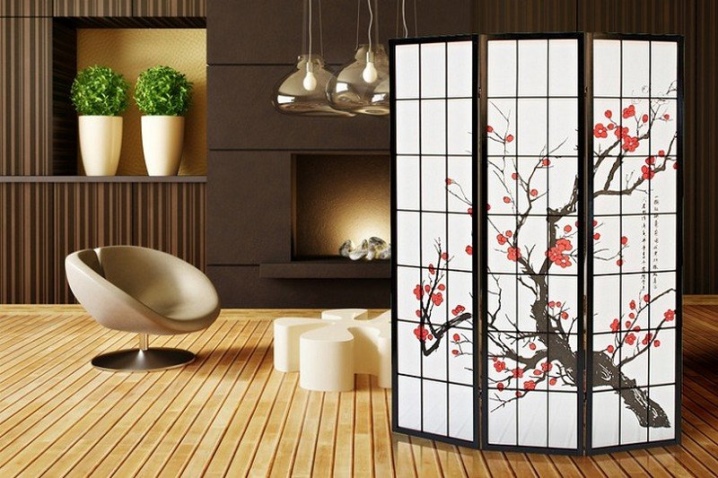
The doors of budget modifications are made of PVC canvas. In order to improve its aesthetic properties, a printing pattern is applied to the front surface. Polymer film with photo printing is one of the most popular production materials. In the lines of manufacturers, there are products from MDF with a 3D pattern.
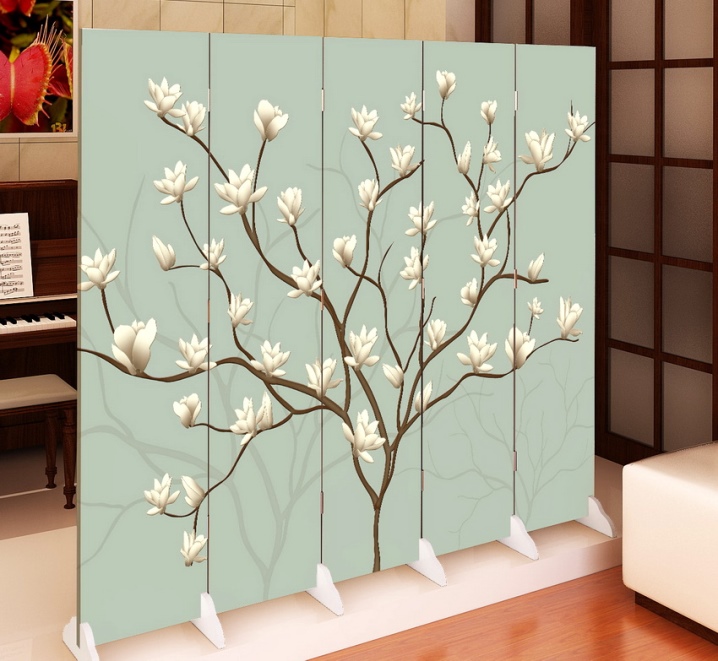
Dimensions (edit)
A classic screen has a height equal to the height of an average human height. On average, the height range varies from 1.5 to 1.8 m. The width of one sash is usually from 40 to 60 cm. Models with a large number of sections may differ in smaller sash widths. On average, for models with less than 9 sashes, it is 40-48 cm.
On sale you can buy options with dimensions 160x40, 177x48, 176x51, 179x43 cm. High versions can be up to 2 m with a width of each section of 50-58 cm. Hanging versions can be up to 2.2-2.3 m high.
The dimensions of other varieties are set by the customer, choosing an option taking into account the height of the walls of his home.
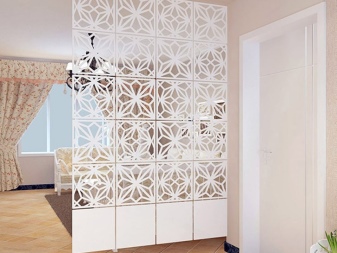
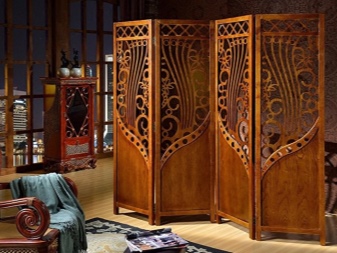
Design options
Screen design solutions can be very diverse. As a rule, the type of product depends on the style of the interior of the room in which the screen itself is bought. For example, models of oriental style are often decorated with paintings of Asian painting... These can be bamboo trees, fanz drawings, dragons and any historical events.
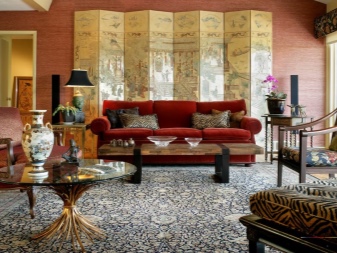
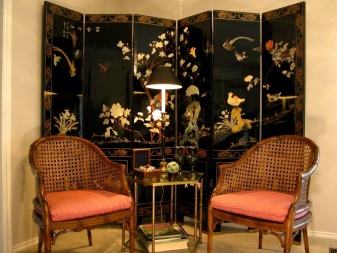
Metal counterparts are often decorated with openwork forging. At the same time, the type of pattern differs, which allows you to choose an option for both retro style and modern design. Geometric and floral patterns, combined screens with a metal case and mirror inserts are in fashion.
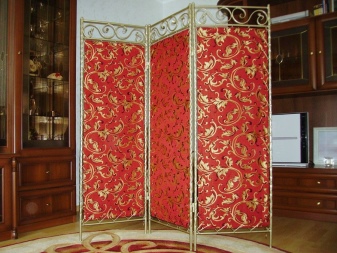
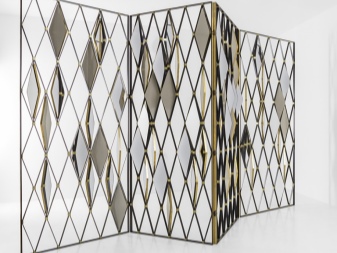
Pendant models may vary in length. On sale there are options for the standard type and shortened models that do not reach the floor of 40-60 cm.Moreover, the design of such partitions is very diverse. For example, canvases can be divided into squares, each of which is decorated with an identical pattern. In addition, you can purchase models with ribbons, consisting of plastic geometric shapes of different shades and sizes strung on a special thread.
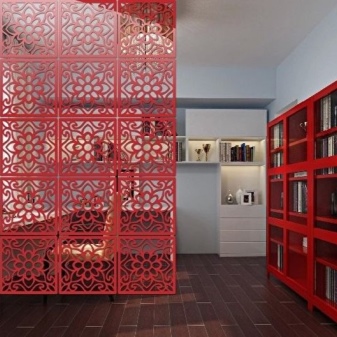

Options for retro styles are distinguished by a certain laconicism and a touch of antiquity. This is expressed in the use of textures of faded or light-colored wood, deliberately with simple textiles of the panels. The theme of drawings on such doors can be very diverse: from Gzhel and meadow flowers to applications of funny animals.
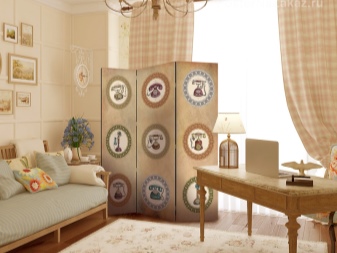
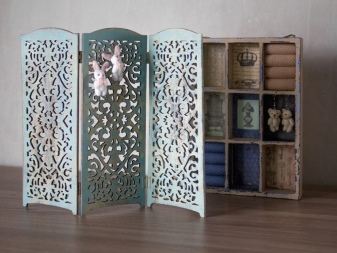
Noteworthy are the bamboo screens that will decorate the eco-style. They are not only safe for household members, but also able to complement both old and modern interior styles. In this case, screens can be combined. For example, products can be rare, frequent, complemented by columns with decorative stones.
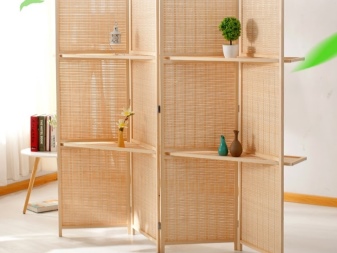
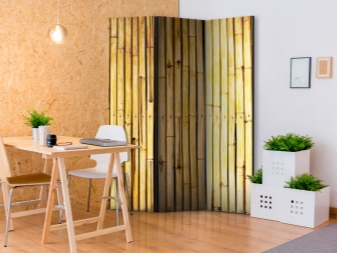
Modern stylistic trends can be decorated with screens made of different materials.
- For modern products with mirror sections or plastic cover are perfect.
- In the interior loft options with the texture of a brick or concrete wall are appropriate. In addition, you can emphasize the interior style with the help of wooden screens of a deliberately rude design.

Scandinavian style it is better to pass it by buying a partition made of glass or metal with a plain textile of the sections.
For African style we need wooden models with a characteristic drawing theme.
Arabic style can be decorated with a product with a domed top of each section and a complex ethnic ornament. The color scheme may vary.
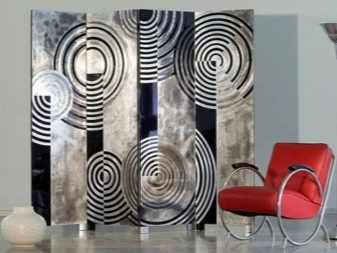
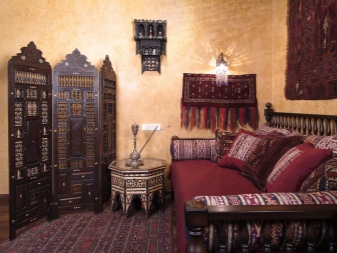
Use in different rooms
A significant advantage of screens is the ability to use them in premises for various purposes. For example, they are appropriate in living rooms, offices, children's rooms, bathrooms. With a harmonious choice, such products can decorate the rooms of city apartments and country houses of different sizes. If desired, you can choose an option even for rooms located in the attic.
In addition, the bay window ledge can be enclosed with screens.
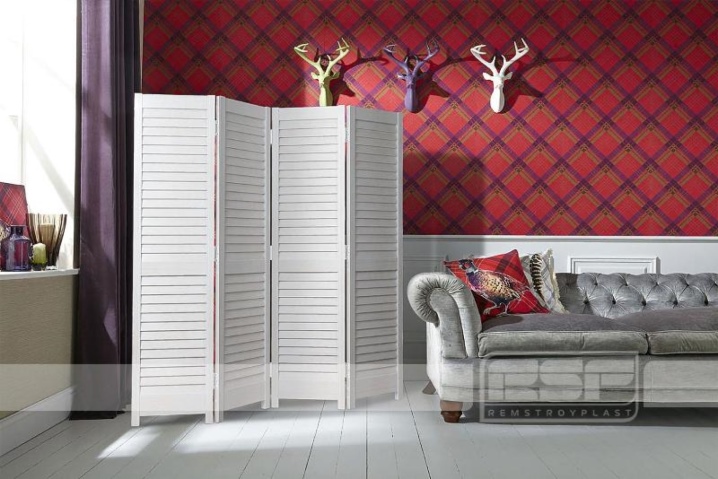
In the living room
Stylish screens for a guest room can carry not only a functional, but also an exclusively decorative load. For example, it can be a product with the picture shown, it will decorate the space behind the sofa against the wall. You can buy 2 screens in the hall at once, protecting the guest area with their help.
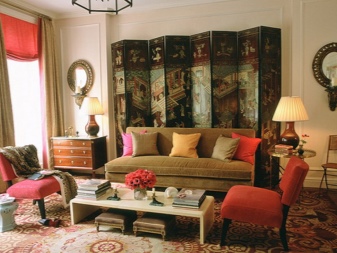
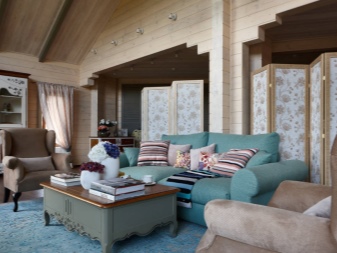
The theme of the drawings can be different: from ethnic motives to abstraction. The complexity of the drawing depends on the area of the room (in small rooms, products of a laconic type look better). If the design is already a lot of variegation, it is better to buy plain screens.
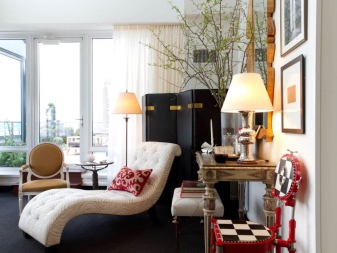
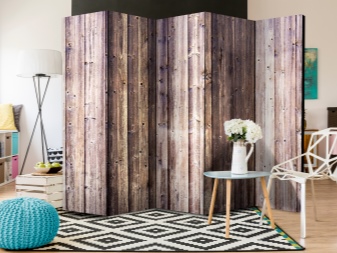
In the bedroom
Bedroom models should be not only decorative, but also functional. It is advisable to buy items suitable for changing or storing clothes. It should be borne in mind that the screen will be used as a hanger.
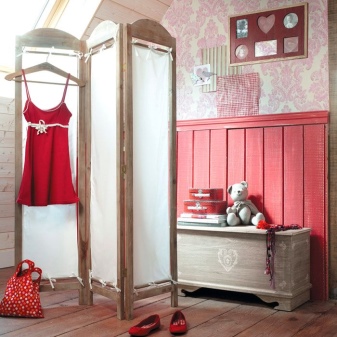
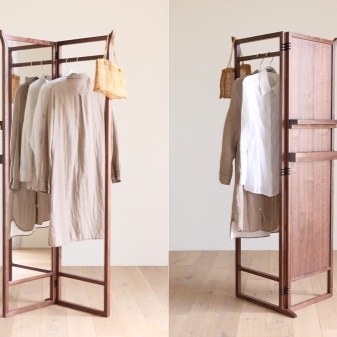
Therefore, the choice of materials for the frame and sections must be approached thoroughly. The design can be like wooden doors, Chinese paper, Japanese art panels. The colors of the bedroom models should be light.
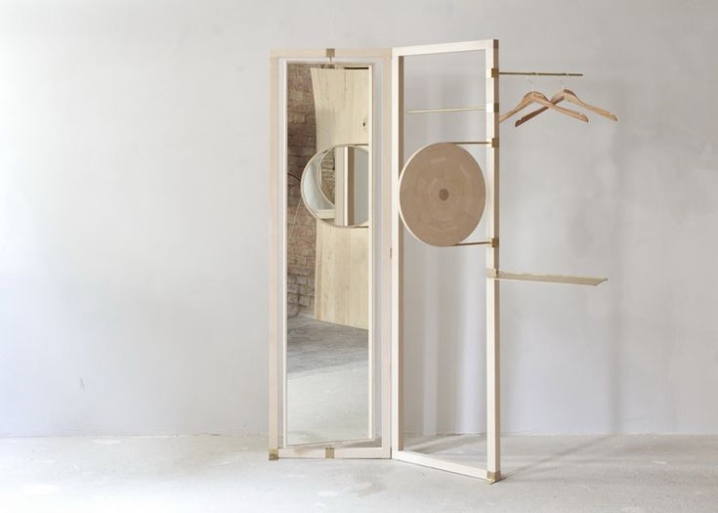
In the nursery
They try to use hanging products in the interior of the nursery. Floor standing models with a small number of sections are not suitable for children, because if the desired angle of inclination is not observed, they may fall... Colors and designs can be either light (pastel) or bright. The drawing is selected in such a way that it suits the interior design. However, it should not be too coarse or large.
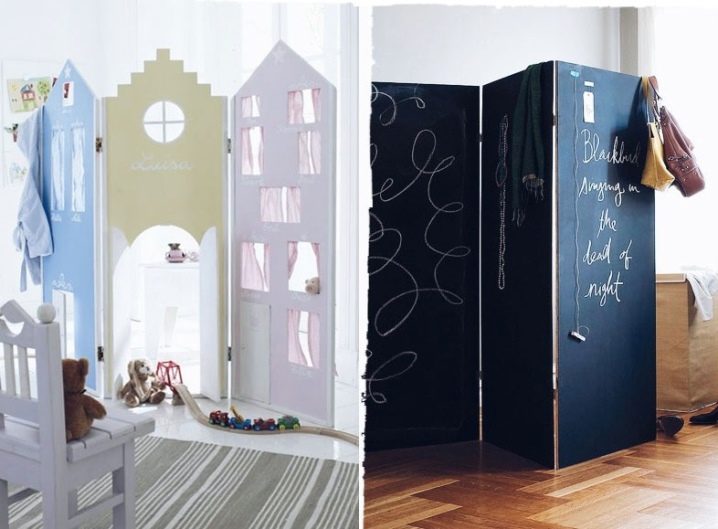
In the kitchen
In the kitchen, it is customary to use furnishing elements with high abrasion resistance. At the same time, products with shelves are relevant here, similar to functional shelving of an open or combined type. Modifications with plastic sections obey these criteria.
For reasons of non-smudging, you need to take models with a print. The subject of colors is varied: from flowers, fruits and coffee beans to abstraction and texture of natural materials. The color scheme can be not only light, but also dynamic.

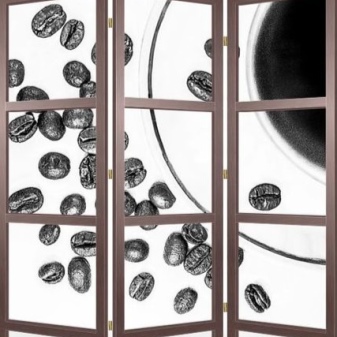
In the bathroom
They buy products made of plastic or polymer film for the bathroom. Textile options do not retain moisture; in damp rooms they quickly deteriorate. The type of screens can be different: both floor and suspended structures are appropriate here.
With the help of any of them, you can not only separate the washing area, but also divide the space of the combined bathrooms. However, products on casters are undesirable, as are varieties of the floor type with a small number of sections.
The choice of this or that option will depend on the type of bath, the level of moisture protection required and the complexities of the room perspective.
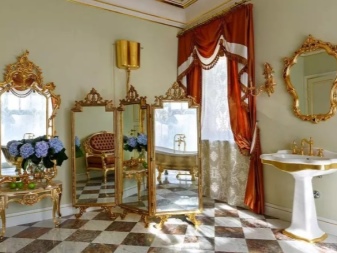
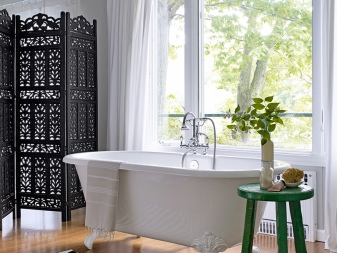
Beautiful examples
Nothing will reveal the possibilities of changing space with the help of screens like illustrative examples. We offer 15 ideas for using partitions.
- Models with an openwork pattern that separate the space of the dining area.


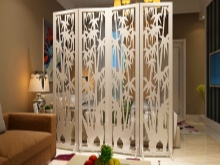
- A functional screen with a mirror, small shelves and photographs in the bedroom interior.
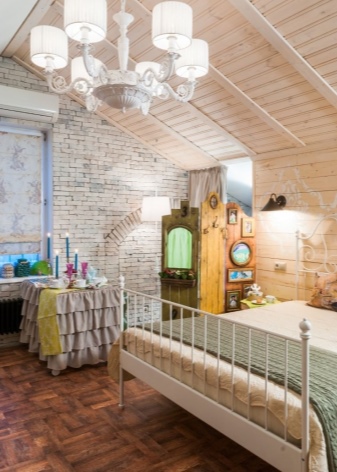
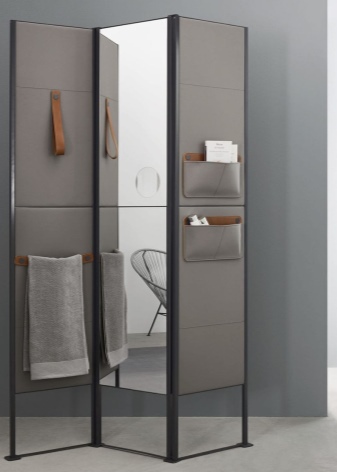
- Shelving model for accentuating the space and storing some accessories.
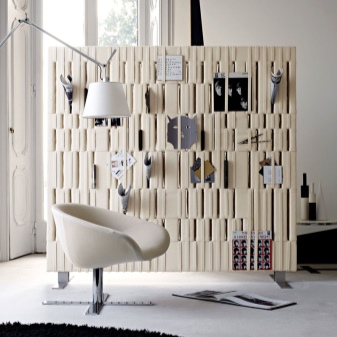
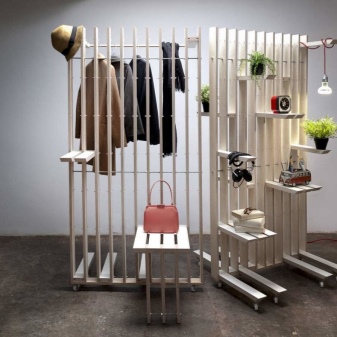
- Using a wicker partition as a separator of the working area in a spacious room.

- Isolation of the living room space by installing a screen in an oriental style.
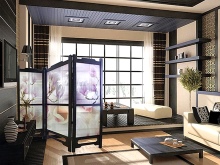
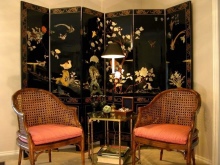
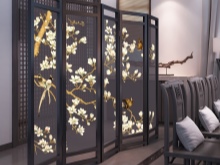
- An example of a living room wall decoration with a multi-winged screen with an oriental pattern.
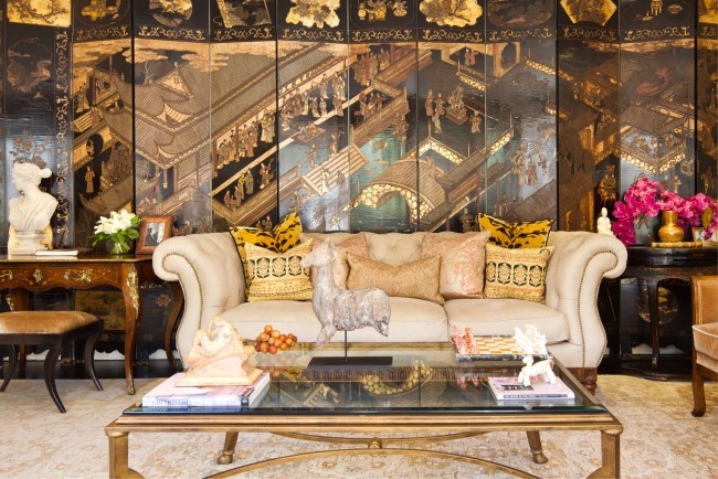
- Antique design with painted wood-like partitions with carved decorative elements.
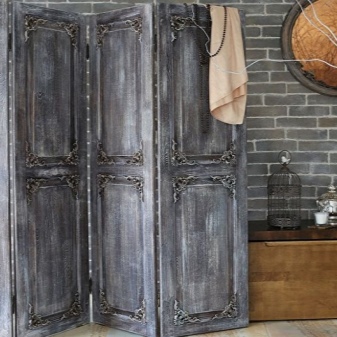
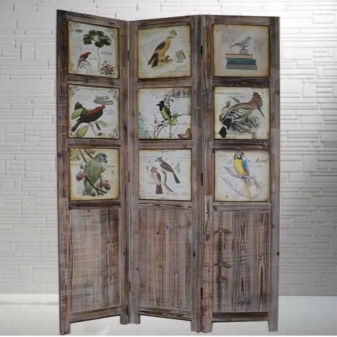
- Decorating the guest area with a screen with a zigzag installation and enhancing the desired effect due to backlighting.
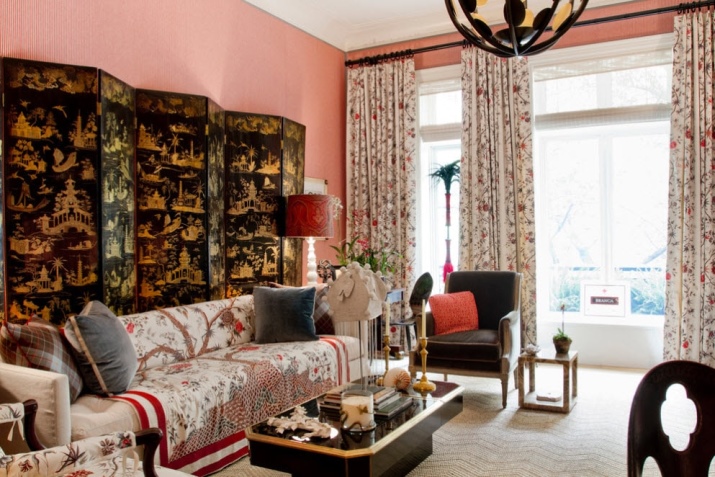
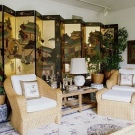
- Screen rack with accessories as a stylish and functional element of a modern interior.
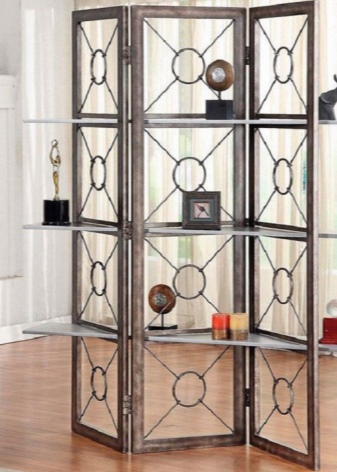
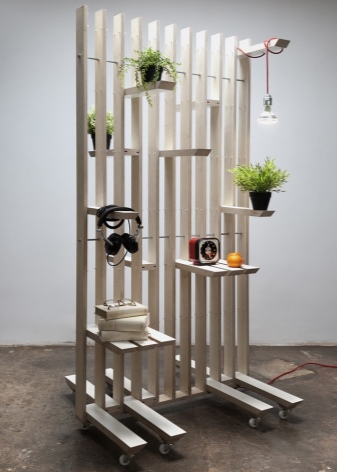
- A weightless three-piece divider that marks the boundaries of the dining area.
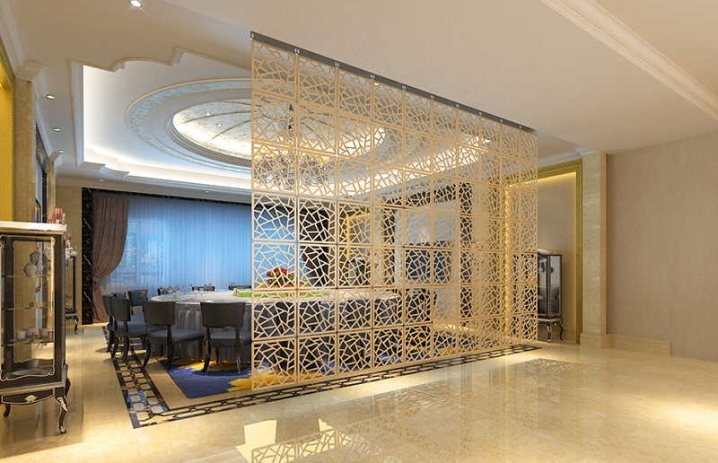
- A compact version of a four-part screen to accentuate the headboard area in the bedroom.

- A harmonious choice of products for the embodiment of the old style, matched to the color scheme of the interior.
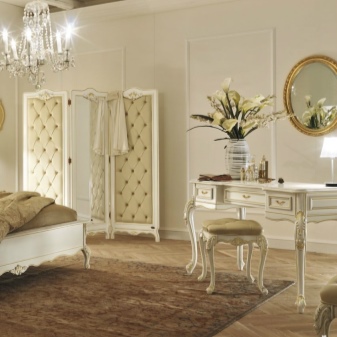
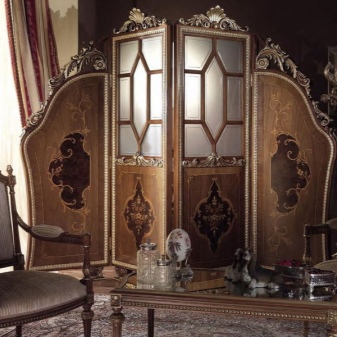
- Using a screen in the bathroom as a splash guard.
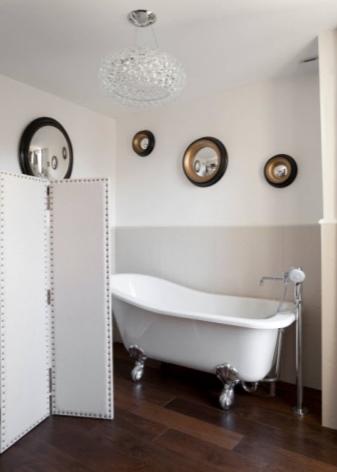
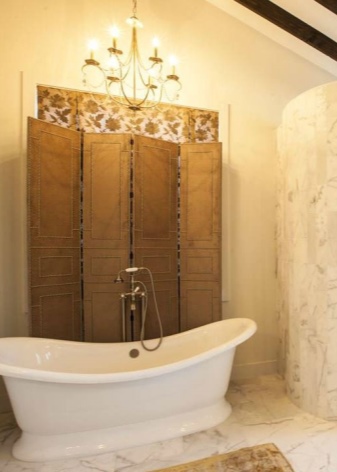
- Retro style decoration with the separation of the space of two functional zones of a spacious room.
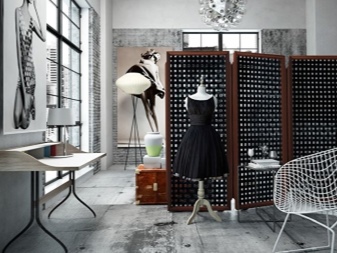
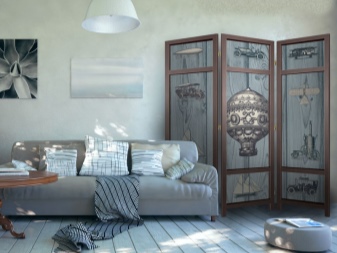
- Single-screen screen in an open-plan home.

How to make a screen with your own hands, see the video.













The comment was sent successfully.